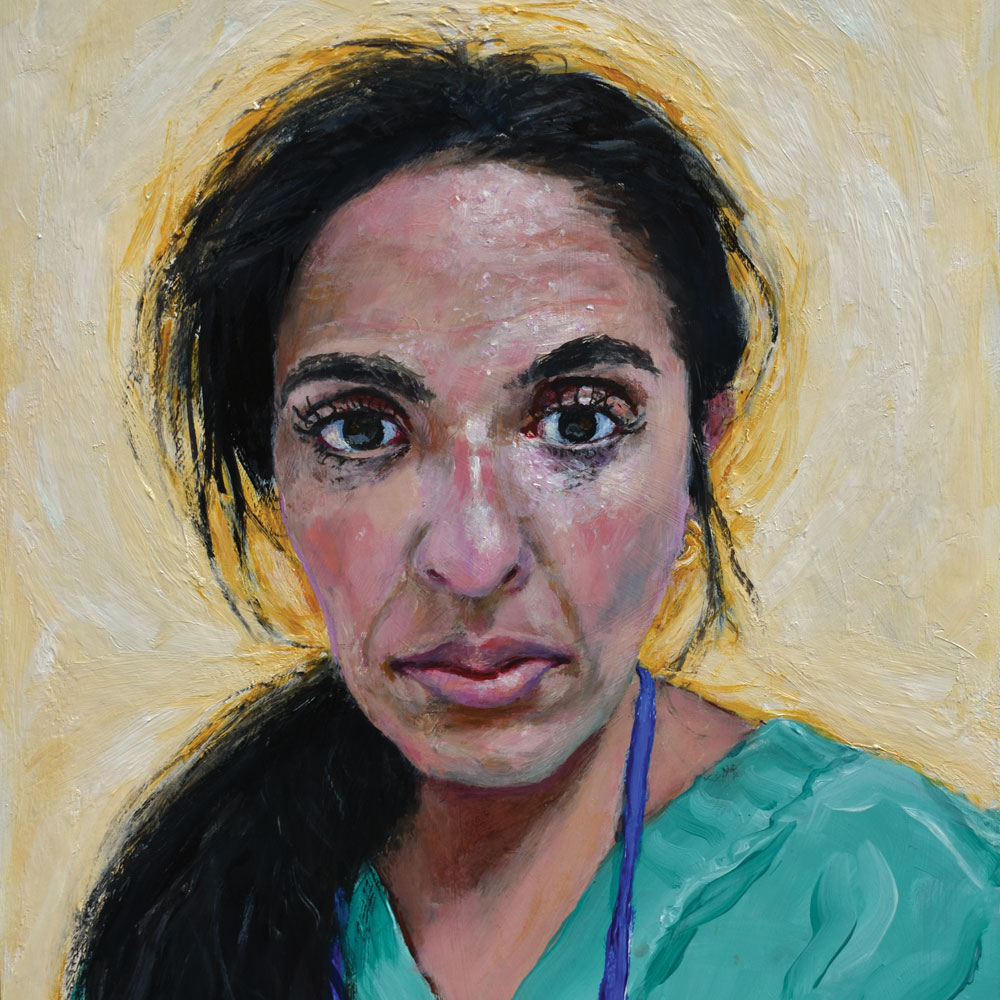
This article comes from the winter 2020 edition of the Nonprofit Quarterly as part of an article series on “America’s healthcare crisis.”
The Nonprofit Quarterly recently sat down with Dr. Willarda V. Edwards, who has been helping to spearhead an effort inside the House of Delegates at the American Medical Association (AMA) to reorient the organization around antiracist principles. This has resulted in a policy platform, made public in mid-November 2020, that took on a wide variety of issues seen as needing systemic redress. The new policy,1 now approved by the AMA House of Delegates, will do the following:
- “Acknowledge that, although the primary drivers of racial health inequity are systemic and structural racism, racism and unconscious bias within medical research and health care delivery have caused and continue to cause harm to marginalized communities and society as a whole.
- “Recognize racism, in its systemic, cultural, interpersonal and other forms, as a serious threat to public health, to the advancement of health equity and a barrier to appropriate medical care.
- “Support the development of policy to combat racism and its effects.
- “Encourage governmental agencies and nongovernmental organizations to increase funding for research into the epidemiology of risks and damages related to racism and how to prevent or repair them.
- “Encourage the development, implementation and evaluation of undergraduate, graduate and continuing medical education programs and curricula that engender greater understanding of the causes, influences, and effects of systemic, cultural, institutional and interpersonal racism, as well as how to prevent and ameliorate the health effects of racism.
- “Identify a set of current best practices for health care institutions, physician practices and academic medical centers to recognize, address and mitigate the effects of racism on patients, providers, international medical graduates, and populations.
- “Work to prevent and combat the influences of racism and bias in innovative health technologies.”2
The platform also addresses related antiracist practices in education and research. One of the more interesting recommendations is the elimination from medicine of the notion of racial essentialism, or “the belief in a genetic or biological essence that defines all members of a racial category.”3 The AMA pledges to, among other things:
- “Recognize that the false conflation of race with inherent biological or genetic traits leads to inadequate examination of true underlying disease risk factors, which exacerbates existing health inequities.
- “Encourage characterizing race as a social construct, rather than an inherent biological trait.
- “Recognize that when race is described as a risk factor, it is more likely to be a proxy for influences including structural racism than a proxy for genetics.”4
“The AMA is dedicated to dismantling racist and discriminatory policies and practices across all of health care, and that includes the way we define race in medicine,” says AMA board member Dr. Michael Suk. “We believe it is not sufficient for medicine to be nonracist, which is why the AMA is committed to pushing for a shift in thinking from race as a biological risk factor to a deeper understanding of racism as a determinant of health.”5
Dr. Edwards tells us that the new, explicitly antiracist position has a two-decades-long history involving many internal and external stakeholders who have worked for years on issues of health equity.
Externally, she says, the AMA has worked with the National Medical Association—the African American physicians’ organization that was established in 1895 because the AMA was a whites-only organization6—and with the National Hispanic Medical Association. Internally, she says, groundwork for this recent advance had been laid out by the Commission to End Health Care Disparities, on which it collaborated with both organizations starting in the 1990s. In essence, the work they started then has continued, interrupted in 2016 by sunsetting the Commission and continuing its work in the already established Minority Affairs section of the AMA—a move that did not last long. As Dr. Edwards notes:
Sign up for our free newsletters
Subscribe to NPQ's newsletters to have our top stories delivered directly to your inbox.
By signing up, you agree to our privacy policy and terms of use, and to receive messages from NPQ and our partners.
By the following year, in 2017, our House of Delegates was clear that we needed to bring the commission back—that there was a lot more work that needed to be done. In 2017, we developed recommendations to create a center on health equity within the AMA. The House [of Delegates] approved it in 2018. In 2019, we appointed Dr. Aletha Maybank to be head of our Center for Health Equity. And it wasn’t just another section or another part of AMA—it became embedded in all AMA business units. But then in June of this year, our AMA board of trustees acknowledged the health consequences of the violent police interactions, and denounced racism as an urgent threat to public health. And we proposed then and there to take action to confront systemic racism, racial injustice, and police brutality. And in November, when we had our usual fall meeting of our House of Delegates—which sets policy for the organization—this policy unanimously passed, and culminated with AMA recognition of racism as a public health threat.
That resolve, of course, was only hardened by the degree to which Black and Brown communities are disproportionately affected by COVID-19. Dr. Edwards points to the fact that the African American community makes up only 13 percent of the U.S. population, yet represents 25 percent of the COVID-19 deaths; and the Latinx community, if categorized monolithically as 18 percent of our population, represents 33 percent of the new COVID-19 cases. But the racial disparities that cause real differentials in health are so all-inclusive, Dr. Edwards says, that you have to back way up and ask what all the factors are that go into, say, a thirty-year difference in life expectancy between one zip code and another immediately bordering it, as you find in, for example, Chicago.7 For that, she says, you cannot just look at issues like better healthcare access, which is certainly a concern in that city, but must also look to the support of business ventures, affordable housing, education, and jobs.
“So what we’re saying here with this new policy on racism as a public health threat is that it’s going to require us having a shift in our thinking from race as a biological risk factor to a deeper understanding of racism—not race—as a social determinant of health,” explains Dr. Edwards. This, she says, requires reforming all of the ways in which the current system works and the assumptions that it is built on. Those assumptions show up daily in the way the fact of race is reported on in medical practice, and the ways in which research is framed and done, and a myriad of other learned but biased behaviors. And then those assumptions replicate in sometimes pernicious ways in seemingly “neutral” functions of the system, like technology: “Digital tools that we use in medicine should ideally level the playing field for patients, but we want to make sure that the future technology is not built with the current social and unconscious bias, but is truly, confidently, based in science and the promotion of health equity.”
In the end, the changes that will be required in the implementation of this new internal policy are not only dizzying in their number and complexity but also appear to be elemental—that is, they would change the whole face of medical care. And, despite the fact that this resolution has been passed unanimously, the proof will, as they say, be in the pudding—up to and including the group’s active positioning on national health policy. Dr. Edwards believes that dismantling racism and all of the ways it works to reinforce itself is the only way forward to truth, healing, and reconciliation, but she agrees that there is a long road to travel from here.
Notes
- Kevin B. O’Reilly, “AMA: Racism is a threat to public health,” AMA, November 16, 2020.
- Ibid.
- Ibid.
- Ibid.
- Ibid.
- As outlined by the AMA, “For more than 100 years, the AMA actively reinforced or passively accepted racial inequalities and the exclusion of African-American physicians. In an address to the National Medical Association (NMA) Annual Meeting in Atlanta, Georgia, on July 30, 2008, Ronald M. Davis, MD, then the AMA’s immediate past president, apologized for more than a century of AMA policies that excluded African Americans from the AMA, in addition to policies that also barred them from some state and local medical societies.” See “The history of African Americans and organized medicine,” AMA.
- Kristen Thometz, “Chicago Has the Largest Life Expectancy Gap in the Country. Why?,” WTTW, June 6, 2019.
Dr. Willarda V. Edwards, MD, MBA, has been committed to organized medicine for over thirty years. She is a past president of the National Medical Association, MedChi (Maryland State Medical Society), the Baltimore City Medical Society, and the Monumental City Medical Society. Most recently, Dr. Edwards was appointed by the Maryland Department of Health to the statewide advisory board for the innovative Centers for Medicare & Medicaid Services six-year agreement on its new primary care program, Comprehensive Primary Care (CPC) Initiative. Putting patients first has been her mission during her ten-year tenure on the board of CRISP (Chesapeake Regional Information System for our Patients), the regional health information center in Maryland. After joining the AMA, in 1994, Dr. Edwards was appointed to the inaugural governing council of the Women Physicians Congress (now the Women Physicians Section), and later served as its chair. Her service to the AMA spans multiple reference committees and task forces, and includes chairing the AMA House of Delegates Committee on Compensation of the Officers and the AMA Council on Constitution and Bylaws. Elected to the AMA Board of Trustees in 2016, Dr. Edwards, as chair of the AMA Task Force on Health Equity, helped lead the way in consensus building and driving action that in 2018 resulted in the AMA House of Delegates establishing the AMA Center on Health Equity.











